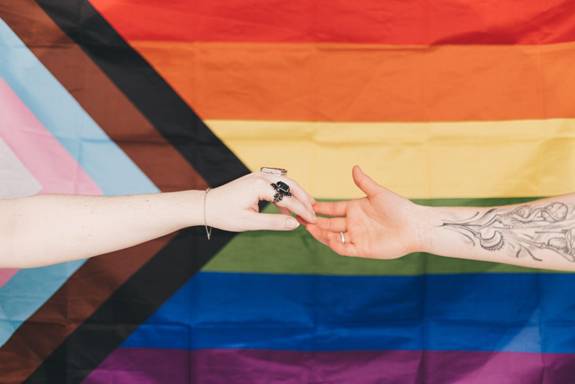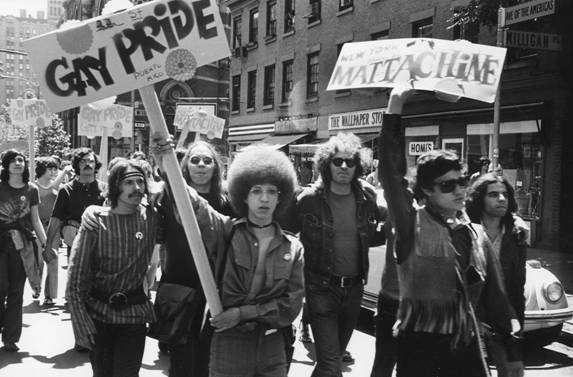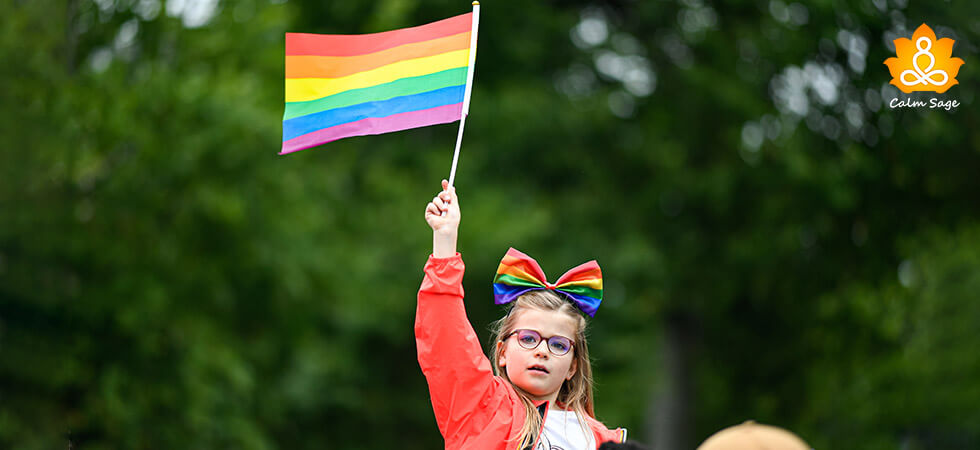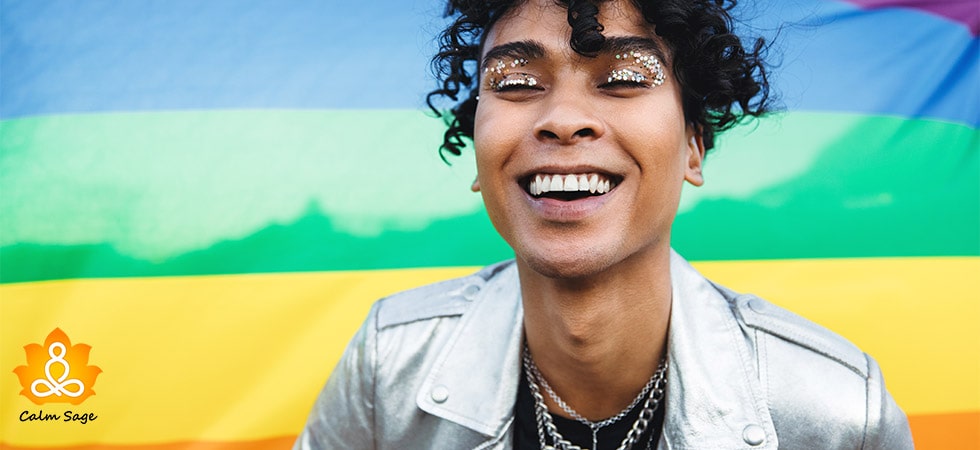Love Undercover: The History And Impact of Lavender Marriage on LGBTQ Lives

As a child, I was taught that marriage is a bond that brings two people together. The two people in question were always assumed to be a man and a woman. The idea of a sacred bond between a same-sex couple was unheard of and even is to date (at least in some countries).
When I was a kid, I assumed that love and marriage went hand in hand, but now, as a grown-up with different beliefs, I’ve come to realize that love and marriage are two distinct concepts and sometimes they can’t exist together.
This is where “Lavender Marriage” comes into play. A marriage of convenience where a non-heterosexual couple (more often a gay man and a lesbian woman) binds themselves in matrimony to avoid cultural and societal pressure as well as evade the stigma surrounding the LGBTQ community. A Lavender Marriage is also seen as a convenient way to access the legal and financial benefits of marriage.
In recent years, many laws and legislations have been amended to include not just a man and a woman in a matrimony, but also to allow people of the same sex to enter the institution of marriage.
Even with the grudging acceptance of same-sex relationships in many countries, the prevalence of lavender marriages remains unchanged.
To avoid societal backlash and cultural pressure, many same-sex couples enter a relationship where love is absent. Entering a lavender marriage out of convenience can take an emotional toll on LGBTQ lives. But, how? Let’s explore the history, meaning, and impact of lavender marriage on the LGBTQ community.
The Origins of Lavender Marriage

The concept of Lavender Marriage can be traced back to the 20th century, mainly before World War II, when societal attitudes and public attitudes towards homosexuality and the LGBTQ community made it almost impossible for a homosexual person to be open and acceptable in society.
Lavender marriages were a term that catered specifically to Hollywood actors and actresses who couldn’t afford to be open about their sexual orientation. To maintain their public careers, many celebrities entered loveless lavender marriages to protect themselves from societal judgment and hate.
One of the noteworthy examples of being open with one’s sexual orientation and refusing to enter a lavender marriage is that of William Haines. At the age of 35, his career was brought to an end when he refused to end his relationship with his partner.
His company at that time punished him for defying the direction and brought his career to a swift end.
Back then, entertainment companies even put clauses in the contracts that placed the actors in a situation where either they put their livelihoods on the line or their happiness. In a way, lavender marriages were also a way to preserve the public image of the actor or actress, especially when said actor or actress was famous for their public performances and sex appeal.

Image source: CNN
As the end of the 20th century neared, a change was brought to the doorsteps of the LGBTQ community. The 1969 Stonewall Riots were a mark of change. In the aftermath of the Riot, the LGBTQ community turned the tide and that brought attention to demand for equal rights and respect for the queer community in the United States.
Gradually, as acceptance of same-sex relationships increased and the queer community started to gain support from allies around the world, Lavender marriages almost disappeared. However, in communities and cultures, especially in South Asia and Asian countries, same-sex relationships are not widely accepted or considered equal.
In such communities, lavender marriages exist to date and have become a way to satisfy their family’s wishes and avoid being disowned by their families.
The Impact of Lavender Marriage on LGBTQ Lives
It is a documented fact that many if not all lavender marriages end in either divorce or separation and more often than not, this arrangement takes a toll on one’s emotional and mental health.
The hiding of one’s sexual orientation can make a homosexual person live a double life and this deception from oneself and loved ones can trigger distress and make them feel like they’re always running away and hiding. Gradually, this distress can turn into depression, anxiety, and identity crisis.
LGBTQ individuals are more vulnerable to mental health disorders compared to others, so it doesn’t come as a surprise when I say that lavender marriage is one of the factors that can contribute to a queer individual’s poor mental health.
A queer individual’s poor mental health can also be linked to high levels of stress, stigma, and discrimination faced by them at home, work, and even in social circles. To make it worse, seeking queer-affirmative mental health help can be challenging as well.
In a culture where tradition and patriarchy are followed, it can be hard for a woman to openly accept their sexuality and gender expression without feeling rejected. When you’re forced to hide your true self behind the facade that is Lavender Marriage, you deny yourself the freedom to gender expression and self-acceptance.
Not only do lavender marriages prevent your happiness but can also make you lie to yourself. Living in the closet can take a severe toll on your freedom as a person and cause you to live in perpetual hiding where the idea of being true to yourself seems like a distant dream.
When you feel unsafe to be your true self, how can you live a happy and healthy life? In fear of being mocked, disowned, abandoned, or rejected, queer individuals have grudgingly accepted lavender marriages as a part of the community, regardless of the toll it takes on their mental and emotional health, let alone relationships.
The Future of LGBTQ Lives…

Marriage of convenience is not a new concept but has been existing for decades. Love and marriage don’t always go hand in hand, especially when you’re a queer person living in a culture where homosexuality is not widely accepted.
Societal pressure and cultural and family expectations put queer people under pressure that they have no other avenue left to explore but enter a lavender marriage.
A lavender marriage may give a queer person protection against legal, social, and familial disputes, but can they be happy, after all? While laws are being enacted to protect the rights and respect of the LGBTQ community, there are still gaps left where queer teens and adults alike continue to fight for their identity, freedom, and self-acceptance.
In many countries around the world, the law and public are slowly accepting same-sex relationships and granting queer individuals equal rights and respect.
Even then, certain countries are still not accepting of the same and in those countries a queer individual has no other choice but to marry a person of the opposite sex to avoid either being mocked, abandoned, disowned, or rejected by their families and loved ones.
Countries Where Same-Sex Marriages Are Accepted;
- Argentina
- Australia
- Austria
- Belgium
- Brazil
- Canada
- Chile
- Colombia
- Costa Rica
- Denmark
- Ecuador
- Finland
- France
- Germany
- Iceland
- Ireland
- Luxembourg
- Malta
- Mexico
- Netherlands
- New Zealand
- Norway
- Portugal
- Slovenia
- South Africa
- Spain
- Sweden
- Switzerland
- Taiwan
- United Kingdom
- United States
- Uruguay
The fight is moving forward one day at a time, but there are still many battles that need to be won. It might have started with the lavender color – a symbol of resistance, power, and pride – but it doesn’t have to end there.
“Every part of you matters.
The world is better
when you are your authentic self—
bold, beautiful, radiant—on full display.
I see every shade of you,
and I couldn’t love you more.”
– Teju Abiola
When you choose to be yourself – beautiful and powerful – there’s nothing in the world that can stop you!
I hope this article helped you understand how lavender marriages can take a toll on LGBTQ lives. Let us know what you think about lavender marriage in the LGBTQ community in the comments below.
Happy Pride! Be Bold and Keep Shining.




















